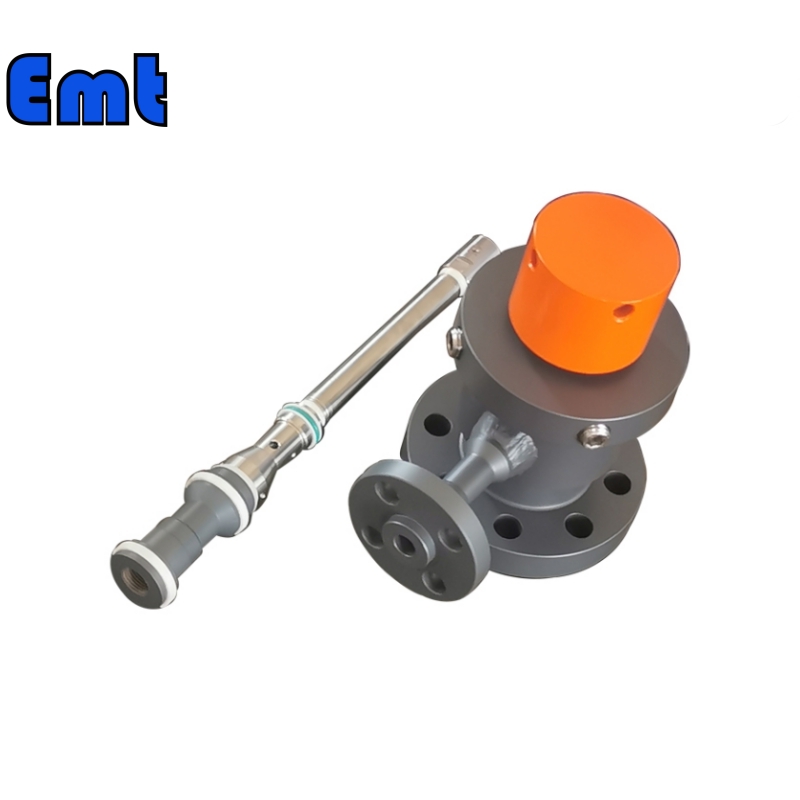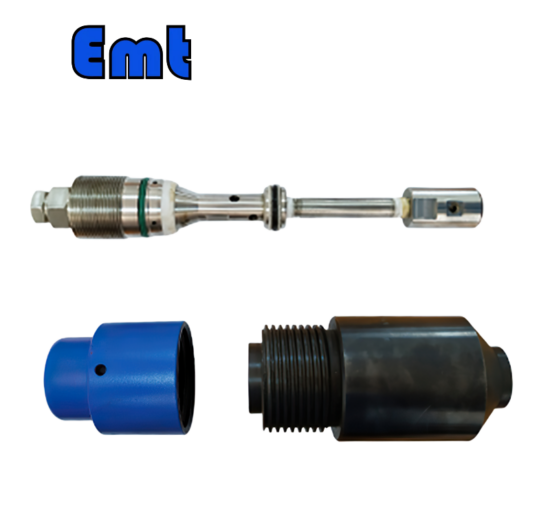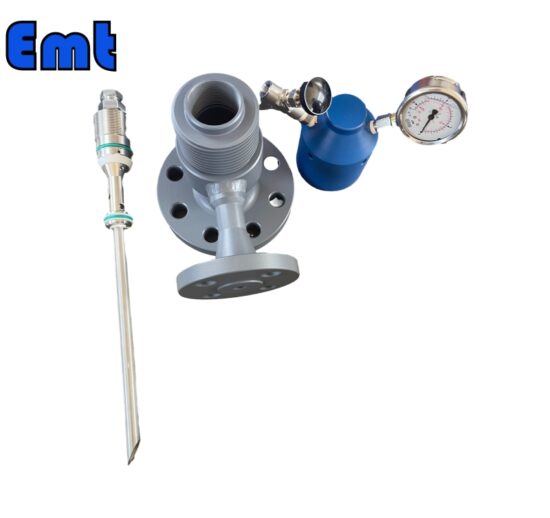What Is A Hydraulic Chemical Injection Quill?
Hydraulics operates as a mechanical function that utilizes the force of liquid pressure. A Hydraulic Chemical Injection Quill uses the principle of hydraulic pressure. Through a weld or flange connection, it connects to the pipe. During the first installation, the pipe should be shut down. However, after the first time, there is no need for the pipeline to shut down. Operators can easily change the chemical injector. Our hydraulic retrieval tool can be easily operated and can retrieve the chemical injector assembly in a short time without exertion.
How do hydraulic systems work?
Modern hydraulic systems operate using a range of components, including actuators, hoses, and sometimes larger systems like aqueducts and irrigation setups, which utilize gravity to generate water pressure. Essentially, these systems harness the inherent properties of water to facilitate its movement and delivery.
The principle of force multiplication is central to hydraulic systems. This is achieved by employing a smaller-diameter cylinder to exert force on a larger piston within a larger cylinder. This arrangement often involves multiple pistons, enhancing the system’s efficiency and power.
Hydraulic pumps play a crucial role in these systems. They pressurize liquids, typically hydraulic oils, which then move pistons through cylinders. Control valves are also integral as they regulate the flow rate of the oil, ensuring the system operates smoothly and effectively. Through these mechanisms, hydraulic systems convert fluid pressure into useful mechanical work.
Selection Model
| Model | |||||||||||||||||||||||||||
| SI | Chemical Injector Quill | ||||||||||||||||||||||||||
| -Code | Plug | ||||||||||||||||||||||||||
| Pxxx | Type | Material | Sealing Material | ||||||||||||||||||||||||
| 0 | No Request | 0 | CS | 0 | No Request | ||||||||||||||||||||||
| 1 | Hollow Plug Body | 1 | 316SS | 3 | DSS | 1 | Viton O-Ring / PTFE Primary Packing | ||||||||||||||||||||
| 2 | Solid Plug Body | 2 | 316LSS | 4 | INCONEL | 2 | HNBR | ||||||||||||||||||||
| – Code | Injection Nut | ||||||||||||||||||||||||||
| Nxx | Connection Size | Material | |||||||||||||||||||||||||
| 0 | i.e. No Request | 0 | i.e. CS | ||||||||||||||||||||||||
| 1 | i.e. 1/4″ | 1 | i.e. 316SS | 3 | i.e. DSS | ||||||||||||||||||||||
| 2 | i.e. 1/2″ | 2 | i.e. 316LSS | 4 | i.e. INCONEL | ||||||||||||||||||||||
| – Code | Injection Tube | ||||||||||||||||||||||||||
| Sxxx-Lx″ | Connection Size | Material | Nozzle | Line size(x″) | |||||||||||||||||||||||
| 0 | No Request | 0 | CS | 0 | i.e. No Request | The most effective position for injection is generally at the center of the pipe | |||||||||||||||||||||
| 1 | i.e. 1/4″ | 1 | i.e. 316SS | 1 | i.e. Open | ||||||||||||||||||||||
| 2 | i.e. 1/2″ | 2 | i.e. 316LSS | 2 | i.e. Quill | ||||||||||||||||||||||
| 3 | i.e. DSS | 3 | i.e. Cap & Core | ||||||||||||||||||||||||
| 4 | i.e. INCONEL | ||||||||||||||||||||||||||
| – Code | Nipple and Valve(or end Flange)of Tee | ||||||||||||||||||||||||||
| Txx | Connection Size | Material | |||||||||||||||||||||||||
| 0 | i.e. No Request | 0 | i.e. CS | ||||||||||||||||||||||||
| 1 | i.e. 1/4″Nipple | a | i.e. 1/4″Nipple and Valve | 1 | i.e. 316SS | ||||||||||||||||||||||
| 2 | i.e. 1/2″Nipple | b | i.e. 1/2″Nipple and Valve | 2 | i.e. 316LSS | ||||||||||||||||||||||
| 3 | i.e. 3/4″Nipple | c | i.e. 3/4″Nipple and Valve | 3 | i.e. D SS | ||||||||||||||||||||||
| 4 | i.e. 1″Nipple | d | i.e. 1″Nipple and Valve | 4 | i.e. INCONEL | ||||||||||||||||||||||
| 5 | i.e. 1/4″Flange | e | i.e. 1/4″Nipple end Flange | ||||||||||||||||||||||||
| 6 | i.e. 1/2″Flange | f | i.e. 1/2″Nipple end Flange | ||||||||||||||||||||||||
| 7 | i.e. 3/4″Flange | g | i.e. 3/4″Nipple end Flange | ||||||||||||||||||||||||
| 8 | i.e. 1″Flange | h | i.e. 1″Nipple end Flange | ||||||||||||||||||||||||
| For Example, SI-P221-N12-S122-L4″-T22 | |||||||||||||||||||||||||||
| SI:e.g. Sampling & Injection Assembly, | |||||||||||||||||||||||||||
| P221: e.g. Solid Plug Body in 316LSS Viton O-Ring and PTFE Primary Packing, | |||||||||||||||||||||||||||
| N12:e.g. injection Nut Connection Size is 1/4″and Material is 316LSS, | |||||||||||||||||||||||||||
| S122:e.g. injection Tube Connection Size is 1/4″ and Material is 316LSS.Type of nozzle is quills | |||||||||||||||||||||||||||
| L4″:For 4″pipe. | |||||||||||||||||||||||||||
| T22: Nipple of Tee Connection Size is 1/2″, Nipple material is 316LSS | |||||||||||||||||||||||||||
Applications of Chemical Injection Quill
Chemical injection quills are specialized devices used in various industrial processes to ensure the precise and safe injection of chemicals into a pipeline or a vessel. Their primary function is to introduce chemicals into a system at a designated point, ensuring optimal mixing and dispersion. Here are some common applications of chemical injection quills:
1. Water Treatment
Operators use chemical injection quills in water treatment facilities to inject chlorine, chloramines, and other disinfectants into water supply systems. This helps purify water by killing bacteria and other pathogens, ensuring the water is safe for consumption. They also inject acids or bases to adjust the pH level in the water.
2. Oil and Gas Industry
In the oil and gas sector, workers employ injection quills to inject corrosion inhibitors, scale inhibitors, biocides, and other chemicals into pipelines and well sites. These chemicals help protect equipment from corrosion, scale build-up, and microbial growth, thereby enhancing operational efficiency and safety.
3. Boiler Systems
Operators use chemical injection quills in boiler systems to inject chemicals such as oxygen scavengers and pH control agents. These chemicals help prevent corrosion and scaling inside the boiler and steam lines, thereby extending the life of the equipment and improving efficiency.
4. Cooling Towers
In cooling tower systems, operators use chemical injection quills to introduce algaecides, biocides, and corrosion inhibitors. This helps control biological growth and corrosion, which can significantly degrade system performance and lead to costly repairs and downtime.
5. Chemical Processing
Chemical production facilities use injection quills to add precise amounts of reactants into reaction vessels. This precise dosing is crucial for maintaining the correct chemical balance, which is necessary for producing desired products with high yield and purity.
6. Power Generation
In power plants, especially those using steam turbines, operators use chemical injection quills to inject chemicals into feedwater to control scaling and corrosion, common issues due to the high temperatures and pressures involved.
7. Petrochemicals
The petrochemical industry uses chemical injection quills to add catalysts and inhibitors directly into reactors or processing lines. This helps optimize reaction rates and protect equipment.
8. Food and Beverage Industry
Although less common, the food and beverage industry uses chemical injection quills to inject sanitizers or other treatment chemicals into product lines or cleaning systems to maintain hygiene standards.
9. Wastewater Treatment
Similar to water treatment, wastewater systems use chemical injection quills to inject coagulants, flocculants, and disinfectants. These chemicals help treat wastewater effectively before its discharge or reuse.
Chemical injection quills are designed to ensure that chemicals are injected into the center of the flow stream, promoting rapid mixing and reducing the likelihood of chemical concentration gradients, thereby enhancing the effectiveness and safety of the chemical injection process.









There are no reviews yet.